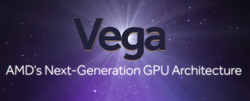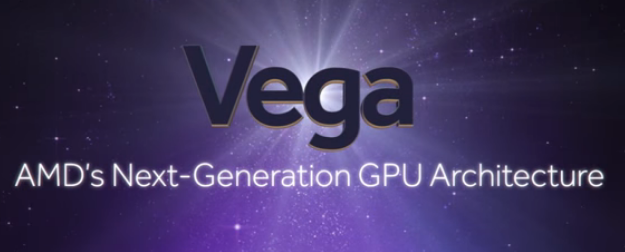
Jan. 9, 2017
By: Michael Feldman
Radeon GPUs based on AMD’s next-generation “Vega” architecture will soon be shipping. The chipmaker unveiled some of the details of the new graphics processor in an announcement on January 5.
 AMD is positioning Vega as a new direction in GPU architectures, whose design will impact future processor generations – that according to Raja Koduri, senior vice president and chief architect, Radeon Technologies Group, AMD. “It is incredible to see GPUs being used to solve gigabyte-scale data problems in gaming to exabyte-scale data problems in machine intelligence,” he said in a prepared statement. “We designed the Vega architecture to build on this ability, with the flexibility to address the extraordinary breadth of problems GPUs will be solving not only today but also five years from now.”
AMD is positioning Vega as a new direction in GPU architectures, whose design will impact future processor generations – that according to Raja Koduri, senior vice president and chief architect, Radeon Technologies Group, AMD. “It is incredible to see GPUs being used to solve gigabyte-scale data problems in gaming to exabyte-scale data problems in machine intelligence,” he said in a prepared statement. “We designed the Vega architecture to build on this ability, with the flexibility to address the extraordinary breadth of problems GPUs will be solving not only today but also five years from now.”
At the core of the Vega design is a new memory architecture, based on second-generation high bandwidth memory (HBM2) technology. Like the original HBM, HBM2 is a stacked memory design providing much higher capacities and performance than GDDR5 technology. The memory stack sits on a logic controller die and the whole memory assembly rests atop an interposer that is shared with the GPU chip. HBM2, by the way, is the same technology used by NVIDIA in some of its high-end “Pascal” GPU offerings, namely the P100 Tesla products.
In Vega, the HBM2 memory will act as a high-speed data cache for the processor. According to the press release, the “Vega architecture is optimized for streaming very large datasets and can work with a variety of memory types with up to 512TB of virtual address space.” The first chips are expected to come with 8 or 16GB of HBM2.
Vega will also feature a revamped compute engine that AMD claims will “attain significantly higher frequencies than previous generations,” although the company offered no details on how they might be achieved. Perhaps more importantly, Vega will be able to process data natively in 8-bit, 16-bit, 32-bit or 64-bit chunks, which makes it more suitable for machine learning workloads that use lower precision math. Again, this is something NVIDIA has already implemented in its Pascal Tesla GPUs targeted to machine learning applications.
For these machine learning workloads, AMD has already announced its new Radeon Instinct line, the initial version of which will be based on the Vega architecture. As far as a Vega-generation FirePro GPU aimed at a more traditional HPC audience, AMD has not offered much guidance. Rumors of servers GPUs with 24 teraflops of compute, 1 TB/sec bandwidth, and 32GB HBM2 are out there, but we’ll have to wait for official word from AMD to see if any of that comes to pass.
For more traditional graphics workloads, Vega will offer an enhanced geometry pipeline, as well as an advanced pixel engine. Both are intended to enhance the visualization experience for professional designers, gamers and virtual reality aficionados.
The first Vega GPU products are expected to ship in the first half of 2017.
